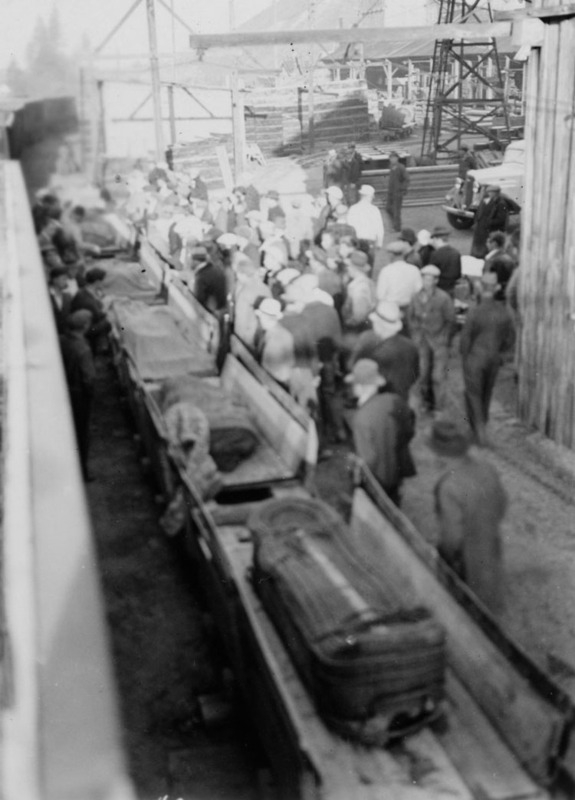We’re starting a new series featuring one of our strongest collecting areas: mining in north Idaho. North Idaho mines began operation in the late 1800s and were shut down and abandoned around the mid-20th century and were primarily underground metal mines that extracted mineral ore such as lead, zinc, silver, copper, antimony, gold, and tungsten. (Fun fact: there are other types of mines such as surface mines, coal mines, petroleum and natural gas mines, and more!).
Today, we focus on life as an underground metal miner which was, at the time of these photos, a dangerous job with many hazards including poor air quality, exposure to toxic gases, equipment accidents, explosions, cave-ins, and injuries. The first photo (top) features several miners wearing an early-style ventilation mask, as underground mining required some form of ventilation.
The last photo (below) depicts a funeral in Mullen, Idaho, for ten men who fell to their death after a cable broke (based on the information on the photograph, we don’t know what caused the cable to break).
Prior to the 1990s, the annual deaths from mining accidents averaged 1,500 per year with tens of thousands of work-related injuries per year.1 With the loss of life and its impact to families and mine owners, safety standards and the advancement of technology have greatly improved mining in the 21st century. Of the 352,600 miners that worked across 14,500 mines in America in 2009, only 34 miners died while on the job.
Stay tuned for next week’s post on mineral extraction!
Sources
Photos courtesy of George W. Tabor Photographs, University of Idaho Library, Special Collections and Archives


![Mining photo [1]](https://objects.lib.uidaho.edu/harvester/small/83_47_8_3_sm.jpg)
![Mining photo [2]](https://objects.lib.uidaho.edu/harvester/small/83_47_8_2_sm.jpg)
